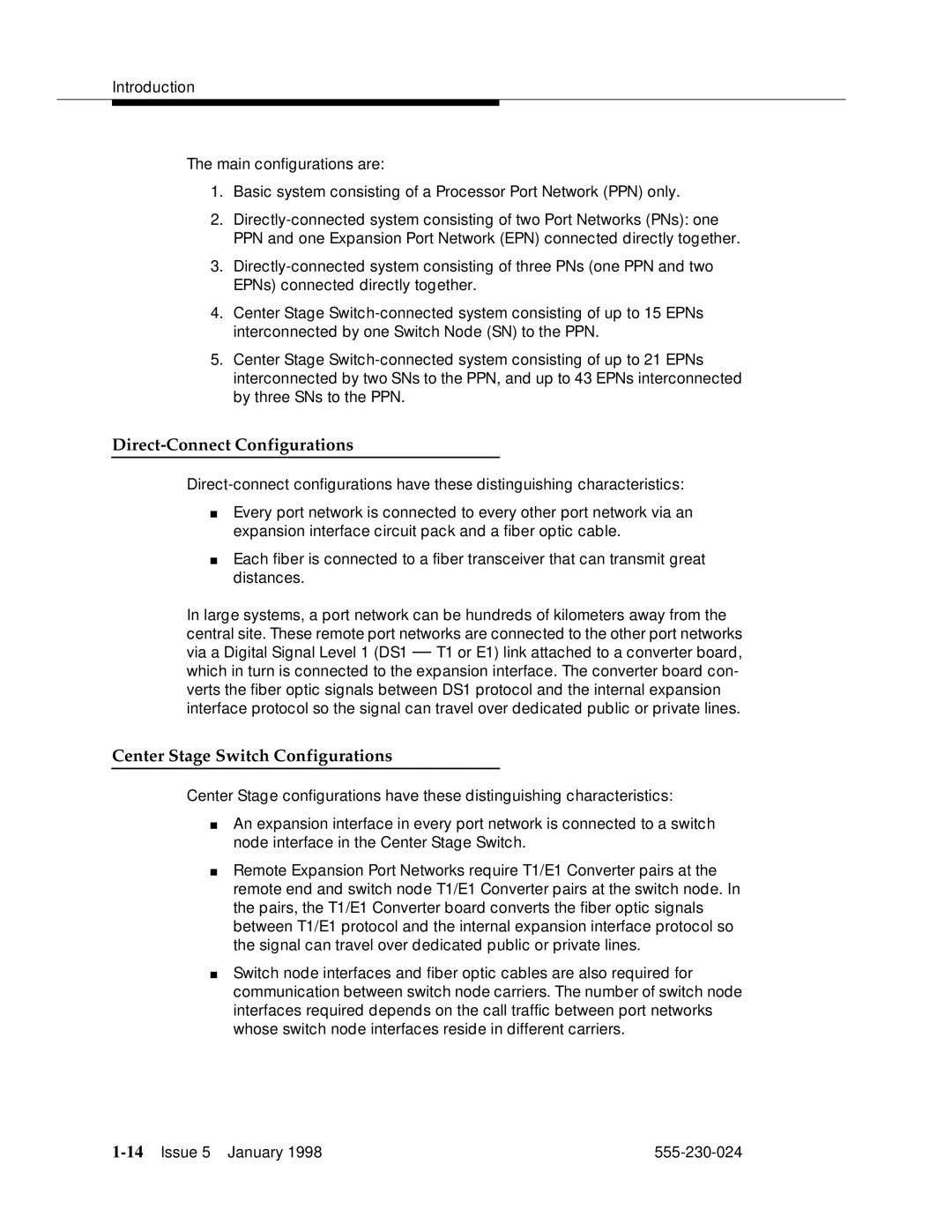
Introduction
The main configurations are:
1.Basic system consisting of a Processor Port Network (PPN) only.
2.
3.
4.Center Stage
5.Center Stage
Direct-Connect Configurations
■Every port network is connected to every other port network via an expansion interface circuit pack and a fiber optic cable.
■Each fiber is connected to a fiber transceiver that can transmit great distances.
In large systems, a port network can be hundreds of kilometers away from the central site. These remote port networks are connected to the other port networks via a Digital Signal Level 1 (DS1 — T1 or E1) link attached to a converter board, which in turn is connected to the expansion interface. The converter board con- verts the fiber optic signals between DS1 protocol and the internal expansion interface protocol so the signal can travel over dedicated public or private lines.
Center Stage Switch Configurations
Center Stage configurations have these distinguishing characteristics:
■An expansion interface in every port network is connected to a switch node interface in the Center Stage Switch.
■Remote Expansion Port Networks require T1/E1 Converter pairs at the remote end and switch node T1/E1 Converter pairs at the switch node. In the pairs, the T1/E1 Converter board converts the fiber optic signals between T1/E1 protocol and the internal expansion interface protocol so the signal can travel over dedicated public or private lines.
■Switch node interfaces and fiber optic cables are also required for communication between switch node carriers. The number of switch node interfaces required depends on the call traffic between port networks whose switch node interfaces reside in different carriers.
